Roman Triumphal Arches
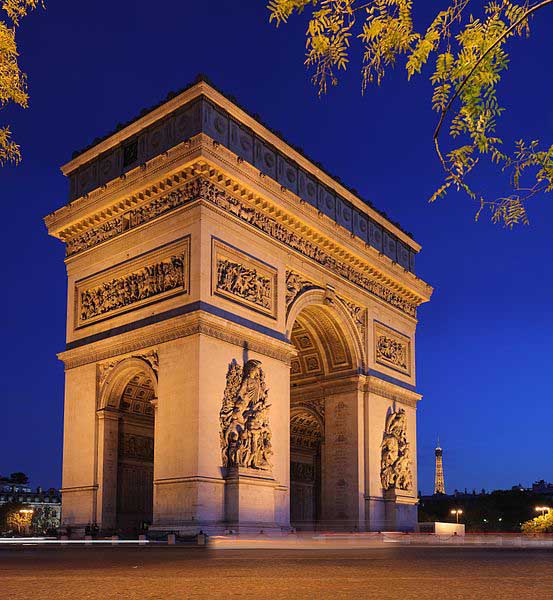
The Arc de Triomphe, Paris
A triumphal arch is a monumental structure in the shape of an archway with one or more arched passageways, often designed to span a road. In its simplest form a triumphal arch consists of two massive piers connected by an arch, crowned with a flat entablature or attic on which a statue might be mounted or which bears commemorative inscriptions. The main structure is often decorated with carvings, sculpted reliefs and dedications. More elaborate triumphal arches may have multiple archways.
Triumphal arches are one of the most influential and distinctive types of architecture associated with ancient Rome. Thought to have been invented by the Romans, the triumphal arch was used to commemorate victorious generals or significant public events such as the founding of new colonies, the construction of a road or bridge, the death of a member of the imperial family or the accession of a new emperor.
The survival of great Roman triumphal arches such as the Arch of Titus inspired many post-Roman states and rulers, up to the present day, to erect their own arches in emulation of the Romans. Arches in the Roman style have been built in many cities around the world, most notably the Arc de Triomphe in Paris, the Siegestor in Munich and the Wellington Arch in London.
Roman Triumphal Arches The origins of the Roman triumphal arch are unclear. Monumental gateways had already been in use for thousands of years by civilizations such as the Hittites, Assyrians, Babylonians and Myceneans. There were precursors to the triumphal arch within the Roman world; in Italy, the Etruscans used elaborately decorated single bay arches as gates or portals to their cities. Surviving examples of Etruscan arches can still be seen at Perugia and Volterra. The two key elements of the triumphal arch - a round-topped arch and a square entablature - had long been in use as separate architectural elements in ancient Greece.
The Greeks made comparatively little use of the arch, confining it to purposes such as structures such as tombs and sewers that were under external pressure, but made extensive use of entablatures in their temples. Entablatures were an essential part of the structural fabric of such buildings, as they were used to hold up the roofs. The great innovation of the Romans was to combine a round arch and a square entablature in a single free-standing structure. The columns became purely decorative elements on the outer face of arch, while the entablature, liberated from its role as a building support, became the frame for the civic and religious messages that the arch builders wished to convey.
The first recorded Roman triumphal arches were set up in the time of the Roman Republic. Generals who were granted a triumph were termed triumphators and would erect fornices or honorific arches bearing statues to commemorate their victories. A number of fornices were built in Rome during the Republican era. Lucius Steritinus erected two in 196 BC to commemorate his victories in Hispania. Another fornix was built on the Capitoline Hill by Scipio Africanus in 190 BC, and Quintus Fabius Allobrogicus constructed one in the Roman Forum in 121 BC. None of them survive today and little is known about their appearance.
Roman triumphal practices changed significantly at the start of the imperial period when the first Roman Emperor Augustus decreed that only emperors would be granted triumphs. The term fornix abruptly ceased to be used and was replaced by arcus, from which the English word "arch" is derived. Whereas Republican fornices were put up at the initiative and expense of the triumphator, without needing or requesting permission, imperial triumphal arches were erected for the triumphator by decree of the senate. The triumphal arch changed from being a personal monument to being an essentially propagandistic one, serving to announce and promote the presence of the ruler and the laws of the state. Arches were not necessarily built as entrances, but - unlike many modern triumphal arches - they were often erected across roads and were intended to be passed through, not round.
Most Roman triumphal arches were built during the imperial period. By the fourth century AD there were 36 such arches in Rome, of which three have survived - the Arch of Titus (AD 81), the Arch of Septimius Severus (203-205) and the Arch of Constantine (312). Numerous arches were built elsewhere in the Roman Empire. The single arch was the most common, but many triple arches were also built, of which the Triumphal Arch of Orange (circa AD 21) is the earliest surviving example. From the 2nd century AD, many examples of the arcus quadrifrons Ð a square triumphal arch erected over a crossroads, with arched openings on all four sides - were built, especially in North Africa. Arch-building in Rome and Italy diminished after the time of Trajan (AD 98-117) but remained widespread in the provinces during the 2nd and 3rd centuries AD; they were often erected to commemorate imperial visits.
Little is known about how the Romans viewed triumphal arches. Pliny the Elder, writing in the first century AD, was the only ancient author to discuss them. He wrote that they were intended to "elevate above the ordinary world" an image of an honored person usually depicted in the form of a statue with a quadriga. However, the designs of Roman imperial triumphal arches Ð which became increasingly elaborate over time and evolved a regularized set of features Ð were clearly intended to convey a number of messages to the spectator.
The ornamentation of an arch was intended to serve as a constant visual reminder of the triumph and triumphator. As such, it concentrated on factual imagery rather than allegory. The faade was ornamented with marble columns, and the piers and attics with decorative cornices. Sculpted panels depicted victories and achievements, the deeds of the triumphator, the captured weapons of the enemy or the triumphal procession itself. The spandrels usually depicted flying Victories, while the attic was often inscribed with a dedicatory inscription naming and praising the triumphator. The piers and internal passageways were also decorated with reliefs and free-standing sculptures. The vault was ornamented with coffers.
Some triumphal arches were surmounted by a statue or a currus triumphalis, a group of statues depicting the emperor or general in a quadriga. The inscriptions on Roman triumphal arches were works of art in themselves, with very finely cut, sometimes gilded letters. The form of each letter and the spacing between them was carefully designed for maximum clarity and simplicity, without any decorative flourishes, emphasizing the Roman taste for restraint and order. This conception of what later became the art of typography remains of fundamental importance down to the present day.

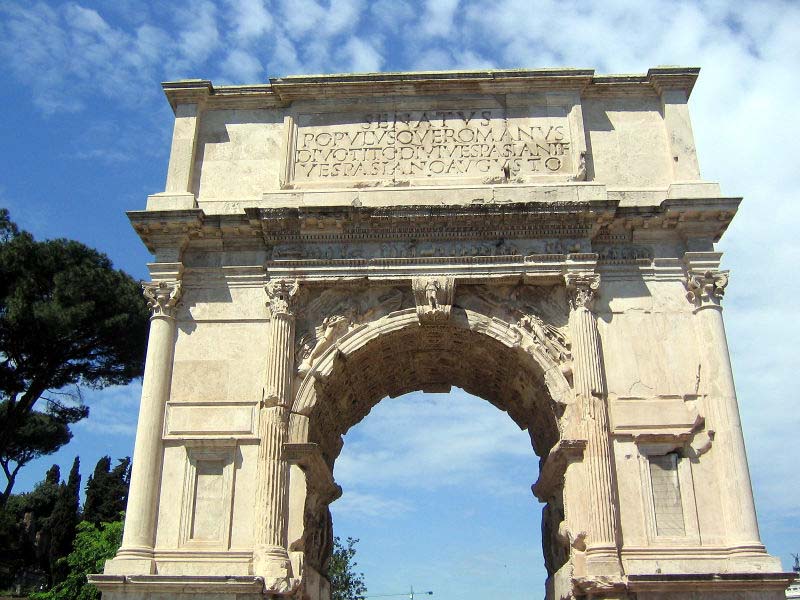
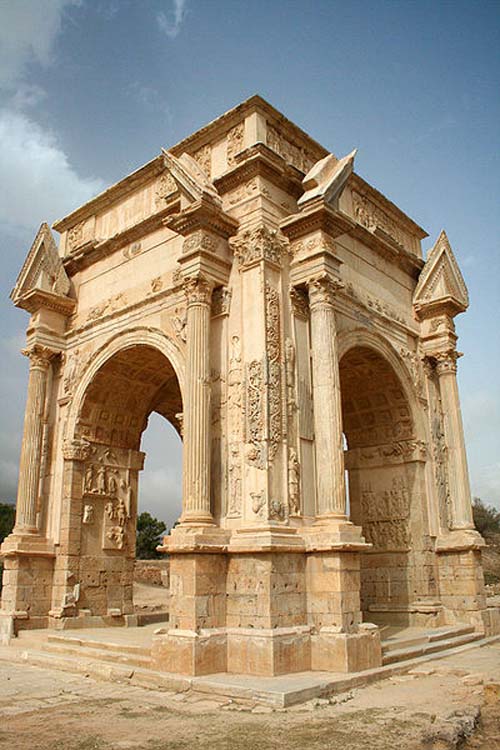
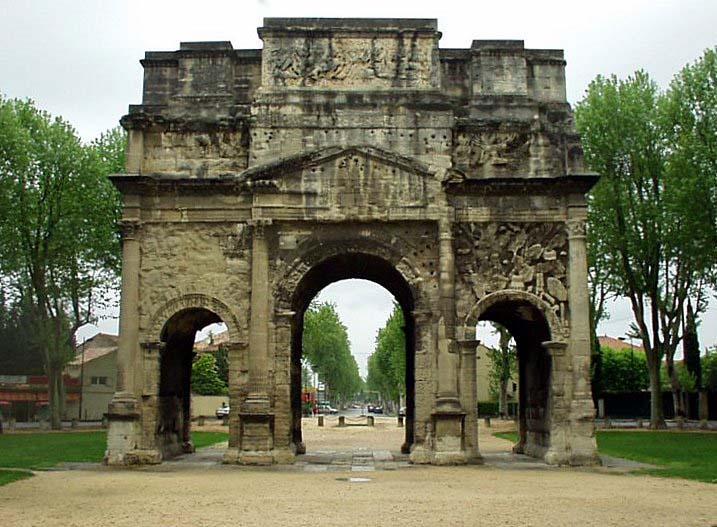
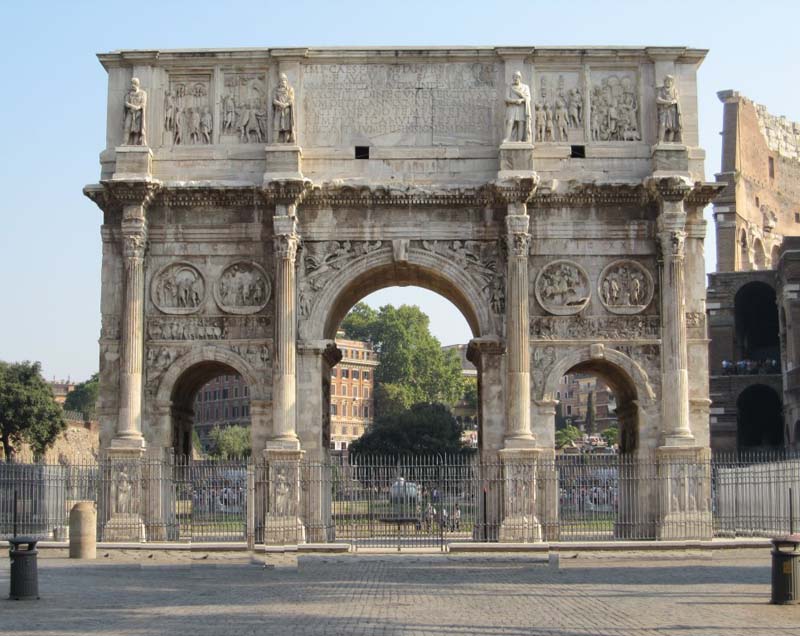
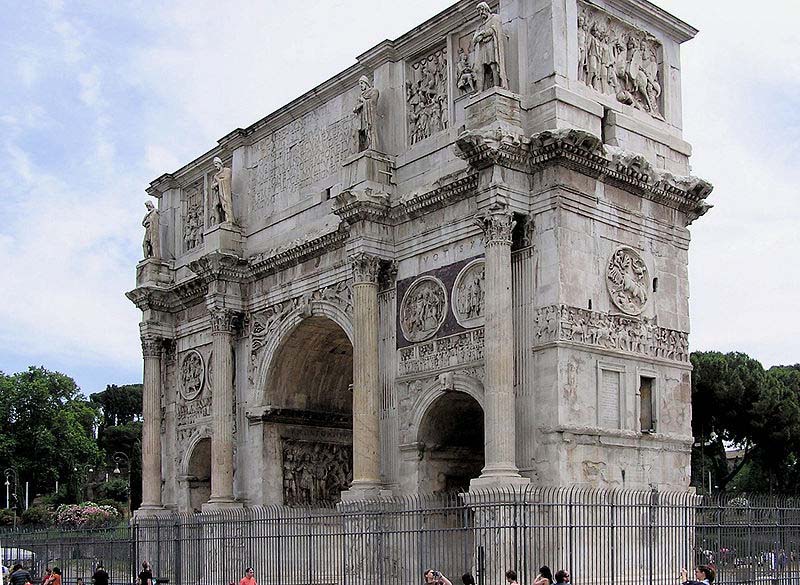
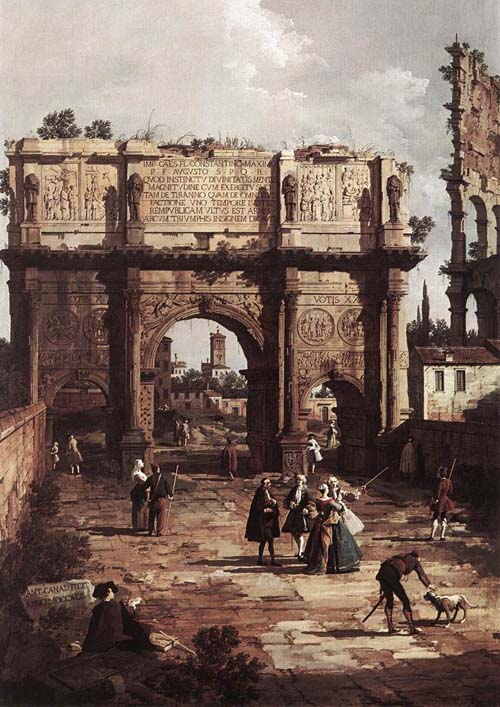
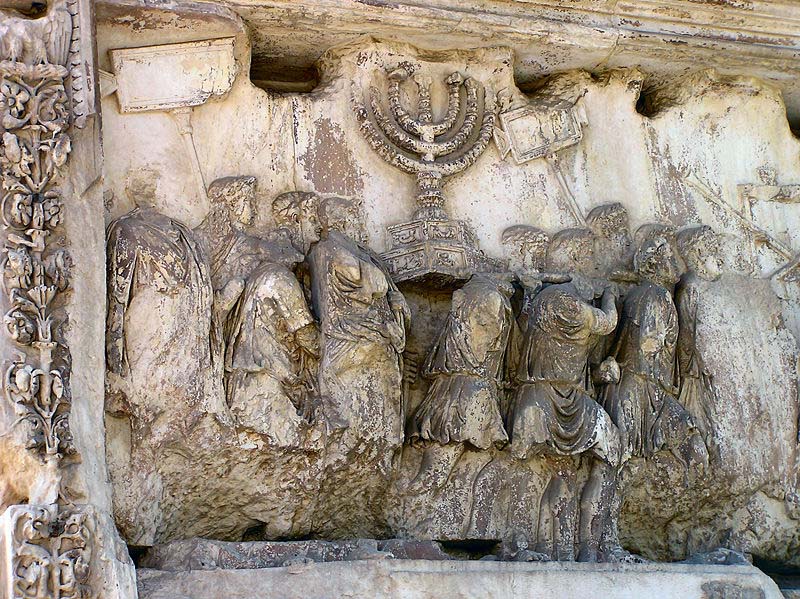
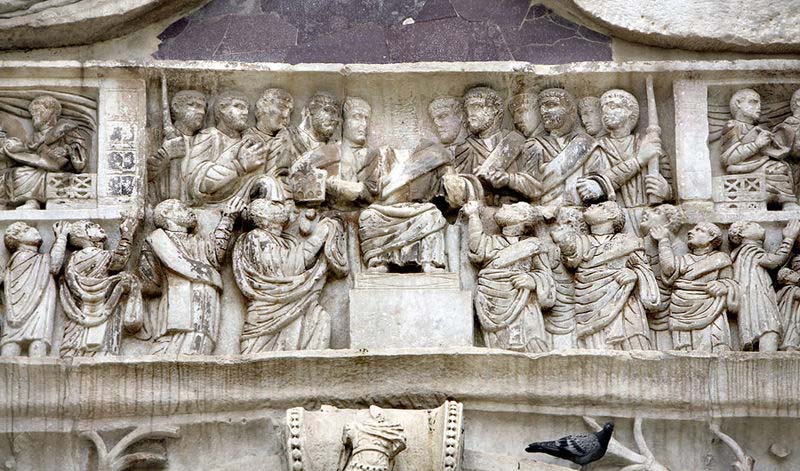
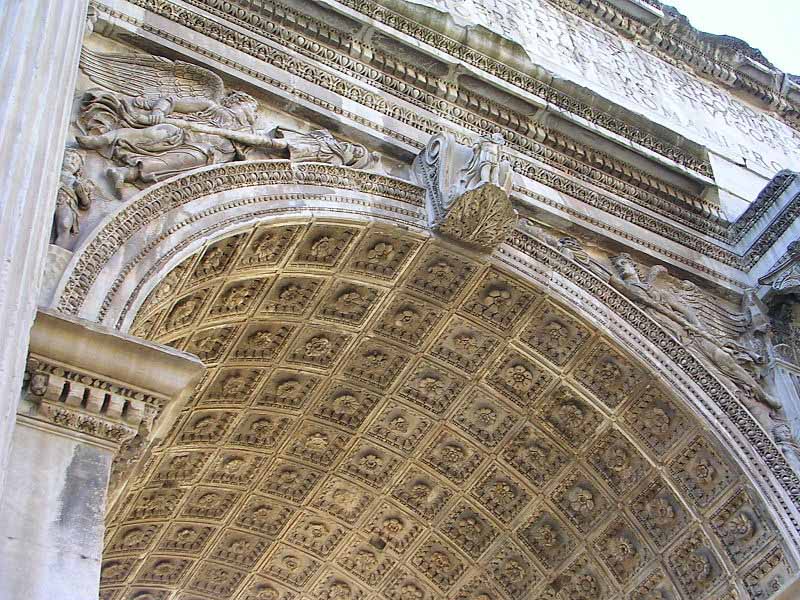
تعليق